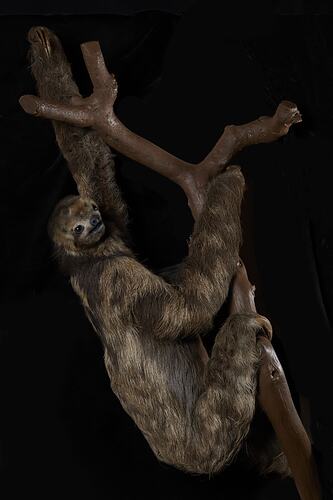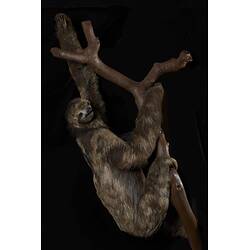Summary
The Northern Maned Three-toed Sloth occurs only in the Atlantic coastal forests of eastern Brazil. It is an arboreal (tree-dwelling) species that lives in wet tropical forests. It feeds on foliage and is highly selective about what species of plant it will eat. Individuals spend most of their time in the tree canopy but descend to the forest floor to urinate and defecate.
Maned Sloths are vulnerable to the destruction of their habitat by humans and many populations have become fragmented as forests are reduced in size, leaving only small patches for animals to live in. Until recently it was thought there was one species of Maned Sloth with distinct northern and southern populations. However, recent genetic work has shown that there are actually two species, the Northern Maned Sloth and the Southern Maned Sloth, meaning the population of what is now the Northern Maned Sloth is smaller than previously thought. The International Union for Conservation of Nature (IUCN) therefore reviewed the status of the Northern Maned Sloth in 2023 and updated its assessment from Vulnerable to Endangered.
Specimen Details
-
Taxon Name
-
Preferred Common name
Northern Maned Three-toed Sloth
-
Other Common Names
Maned Three-toed Sloth, Maned Sloth
-
Number Of Specimens
1
-
Sex
Unknown
-
Specimen Nature
Nature: Mount, Form: Dry
-
Collected By
Unknown
-
Category
-
Scientific Group
-
Discipline
-
Collecting Areas
-
Type of Item
Taxonomy
-
Kingdom
-
Phylum
-
Subphylum
-
Class
-
Superorder
-
Order
-
Suborder
-
Family
-
Genus
-
Species Name
torquatus
Geospatial Information
-
Continent




